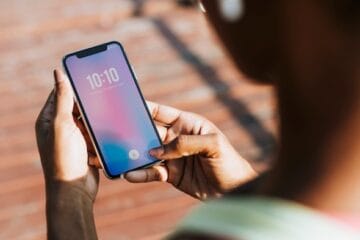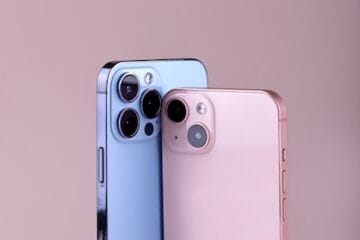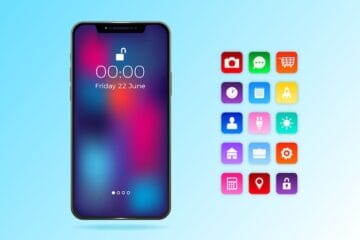If you’re looking to be wowed by a new iPhone design, you might have to wait until 2017.
This is supposed to be a year of big changes for the iPhone, but all rumors so far point to minor tweaks in Apple’s iPhone 7, which CEO Tim Cook is set to unveil Wednesday before a few thousand people at an event in San Francisco. And the biggest change — the removal of the headphone jack — is something that could tick off a lot of people.
Every other year, Apple releases an “S” model of its popular phone, where the S often stands for “same old design.” That was the case last year with the iPhone 6S, which looked identical to 2014’s blockbuster iPhone 6. The only noticeable design update: a new “rose gold” color option.
Besides getting rid of the headphone jack, other changes in the new iPhone device might include more storage (the low-end model may start with 32GB instead of 16GB), a better camera and better water-resistance. Those features may be enough for people to upgrade from a current iPhone and for people who want the newest iPhone. But for others, who now have to buy their phones outright for about $649, or for those who are fine holding on to older models for more than the typical two years, Apple’s iPhone 7 may be a tough sell.
“We believe the new features…and minor design changes are unlikely to either drive enough existing users to upgrade sooner or attract more switchers than before from Android devices,” Oppenheimer analyst Andrew Uerkwitz noted.
Apple declined to comment ahead of its event.
Tune into CNET’s live blog here.
The iPhone is the most popular device Apple has ever made and remains its biggest moneymaker. Apple gets more than two-thirds of its sales from the iPhone, and in July the company confirmed that it had sold its billionth iPhone since Steve Jobs introduced the gadget to the world in 2007. The device has spawned entire new industries, like apps, and it’s changed the way we live.
But there are signs the iPhone phenomenon is slowing down. In April, Apple reported its first ever drop in phone sales, and that trend continued the following quarter. People just aren’t as excited by phones anymore, and it’s unlikely the iPhone 7 will change that.
Since Cook took over as CEO five years ago, Apple has spent more research-and-development money on things like the rumored Apple Car; its R&D expense this year should rise nearly 30 percent from 2015, estimates Above Avalon analyst Neil Cybart. But based on speculation around the iPhone 7, not much of that R&D has gone into Apple’s most important product line, at least not yet.
Apple could be saving its biggest changes for 2017 to coincide with the 10th anniversary of the iPhone. Even so, Apple watchers wonder just where the iPhone’s design can go next. Will the only innovations we’ll see going forward involve making the phone faster and more battery efficient? Is there really more Apple can do?
“How much can you actually change a design nowadays?” said Carolina Milanesi, an analyst with Creative Strategies. “If you look at what is out there, other than taking the TouchID away and making it part of the screen, I don’t see what else they can do.”
Thinking different
Other handset makers have tried to come up with innovative designs. Apple’s archrival, Samsung, which builds its phones around Google’s Android mobile software, has started using curved glass in its newest designs, giving users an “Edge” where they can read quick notifications. Samsung has said its Edge devices are more popular than its regular phone models, and the Galaxy S7 Edge, launched in March, has helped Samsung widen its lead over Apple in the phone market. (About 22 percent of smartphone shipments in the second quarter came from Samsung, compared with 12 percent for Apple, according to IDC.)
Motorola’s Moto Z and Moto Z Force phones have two rows of gold pins on the back that let you magnetically connect different back plates, cases or modules. LG has also toyed with the modular phone concept with its G5. It looks like a regular phone until you press a side button to juggle off the bottom of the device and attach other modules, like one that boosts audio and extends battery life.
Then there’s the crazy Runcible, a circular smartphone designed by Monohm, a company founded by Apple and Sony alums. CNET editor Aloysius Low called it “stunning” and said it “stands out amid a constant drone of rectangular devices.”
Will a round phone become mainstream? Probably not. But that design is similar to what Apple, Samsung and others are trying to do with their smartwatches. Samsung’s new Gear S3, unveiled last week at the IFA electronics show in Berlin, is available in an LTE model so you can use it even when your phone’s not around to connect to the internet.
Apple, for its part, may unveil the Apple Watch 2 at its September 7 event. It’s unlikely the watch will be a standalone version with its own cellular connectivity, even though that’s something Apple is reportedly working on for future models. Like the iPhone 7, the Apple Watch isn’t expected to have a big design overhaul but just tweaks that make it faster and more useful.
With Apple standing still on designs for the past few years, that creates more room for rivals to “think different,” a slogan Jobs popularized as part of ad campaigns to convince consumers to buy Apple products as the company was near bankruptcy.
The popularity of Samsung’s Galaxy S7 Edge has shown that people are ready for innovative designs in their phones. Features as seemingly simple as waterproofing have customers raving, like the Galaxy S7 user who survived a shipwreck in the Philippines because of his phone’s water resistance.
Let’s hope the most noticeable difference in the iPhone 7 isn’t a new glossy black option.
[Source:-cnet]



